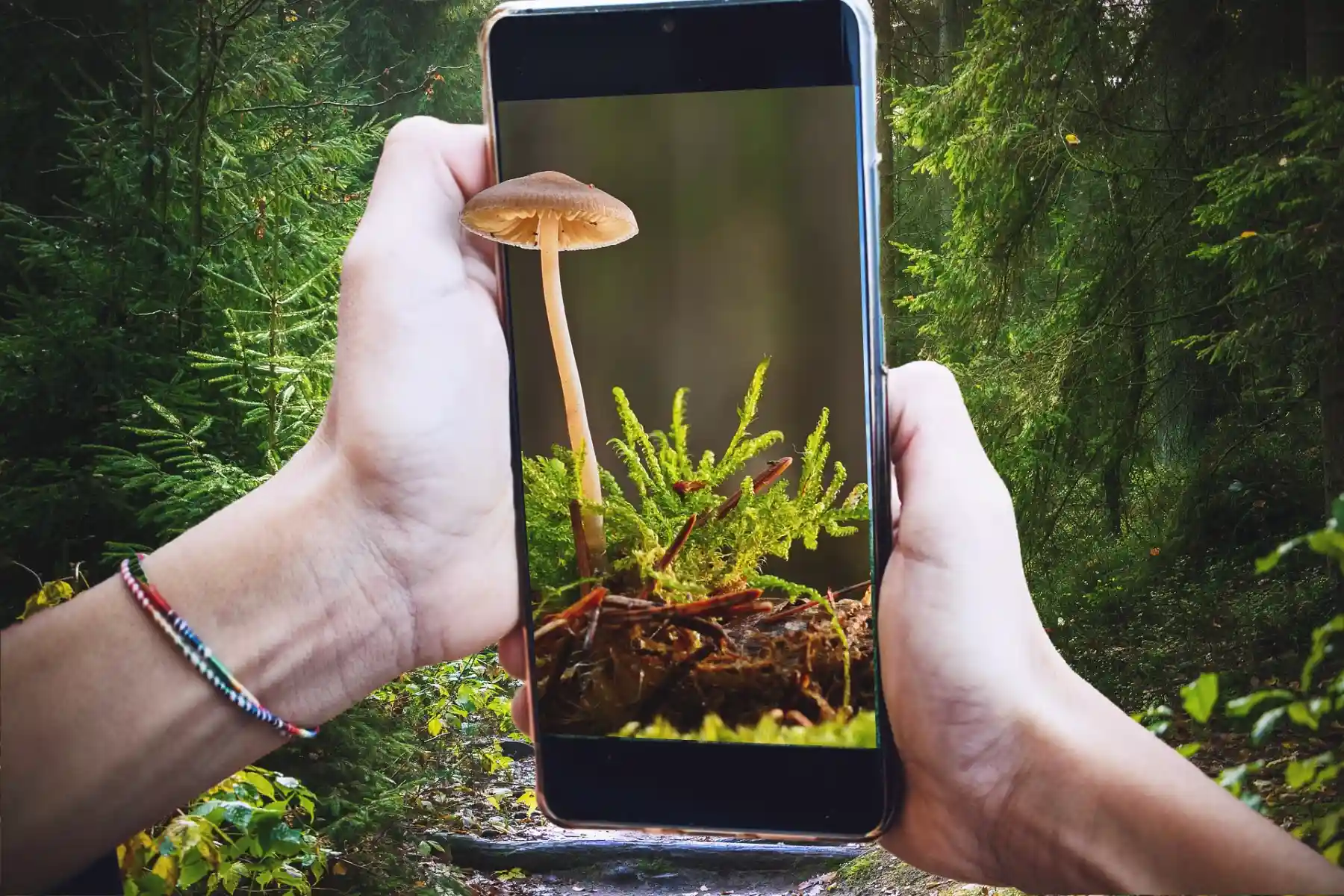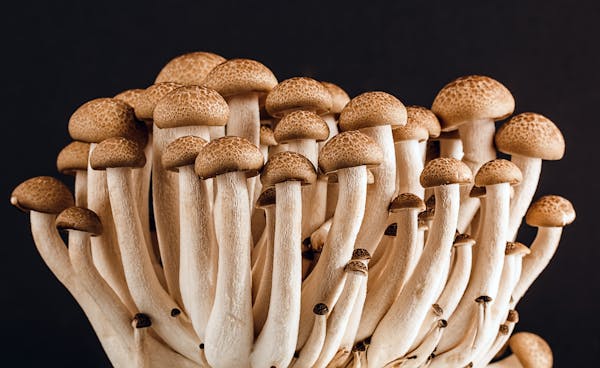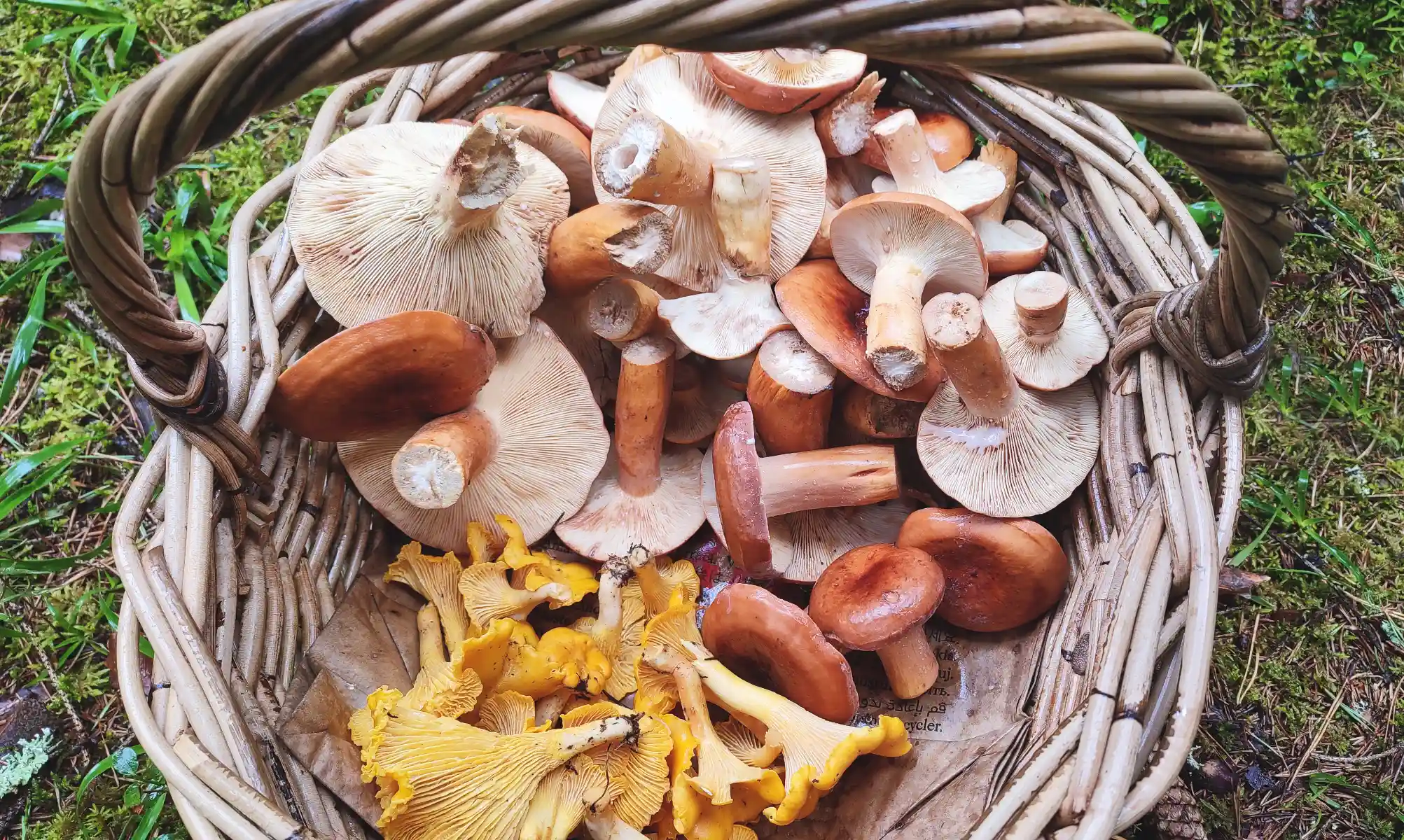Mushroom foraging is a great way to enjoy nature and try something new in the kitchen.
As more and more people head into the woods and fields to look for mushrooms, the question of whether to use a mushroom foraging app is becoming more and more relevant. The combination of tech and traditional practices has changed many areas of life, and mushroom foraging is no exception. These apps claim to help you identify and safely consume wild mushrooms, but how reliable are they?
Table of Contents
Mushroom Foraging App: What They Can and Can’t Do
Mycologists and expert foragers advise against relying on apps for food identification. A few years ago, there were 1,269 cases of mushroom poisoning in France – some were fatal and linked to reliance on apps. The French authorities issued a formal warning against apps to identify mushrooms.
Knowing What You’re Getting
Mushroom foraging apps are really useful. They use image recognition, databases, and user input to help you identify mushrooms. They’re popular with both novice and experienced foragers.
But they aren’t perfect.
How well can the app identify mushrooms?
Here are a few things to look out for and be aware of the risks:
- Apps often struggle to accurately identify mushrooms due to the variability in macroscopic features, such as color, shape, and size, which can vary greatly even within the same species.
- Mushrooms can look different depending on how old they are and where they grow, which can make it tricky for the app to identify them correctly.
- The databases these apps use may also be missing some info, like on less common or newly discovered species.
- Apps that rely on user-submitted photos or descriptions can only provide as accurate an identification as the quality of the input allows. Poor-quality images or inaccurate descriptions can lead to incorrect identifications.
- One more drawback of apps is that they don’t necessarily teach you how to identify mushrooms correctly. It’s really valuable to be able to do this.
- Another big issue is that people might end up relying too much on these tools. While they’re useful tools, they shouldn’t replace more comprehensive identification methods. This can be dangerous because if you eat a mushroom that’s been misidentified, you could end up poisoned or even die.
False Sense of Security: The convenience of apps can create a false sense of security, leading users to trust them over traditional identification methods like field guides or expert consultations.
Just a heads-up: Mushroom identification apps are great for getting an idea of what you’re looking at, but they’re not the be-all and end-all for identifying mushrooms, especially when you’re foraging for edible ones. These apps have some significant limitations, including the potential for inaccuracies, limited databases, and a lack of comprehensive information. It’s important to cross-reference app identifications with expert consultation, reliable field guides, and other reputable resources.
If you rely on an app to identify wild mushrooms, you could be putting your health at risk. In some cases, this could even lead to poisoning or even death. Just be careful, and if you’re not sure, get a professional opinion.
Now Let’s Review Some Popular Mushroom Foraging Apps
Now, hopefully, I have scared you enough to look at the foraging apps like a preliminary guide. They can provide a general idea of the type of mushroom you’ve found, but they should not be your only source of identification.
When learning new mushroom type, always take the time to bring the mushroom home, thoroughly inspect its characteristics, and compare them with a reputable field guide written by proven experts. If you ever have doubts about a mushroom’s identity, don’t hesitate to seek advice from a knowledgeable expert.
Picture Mushroom (Free – Paid Services)
I’ve found Picture Mushroom to be a very helpful app. I only use free app. It’s great for quickly identifying mushrooms I’m not familiar with. I also appreciate the interactive map feature, which shows the types of mushrooms other people have found in my area and even when I’m traveling. It’s a wonderful way to discover new mushroom-foraging spots 😉
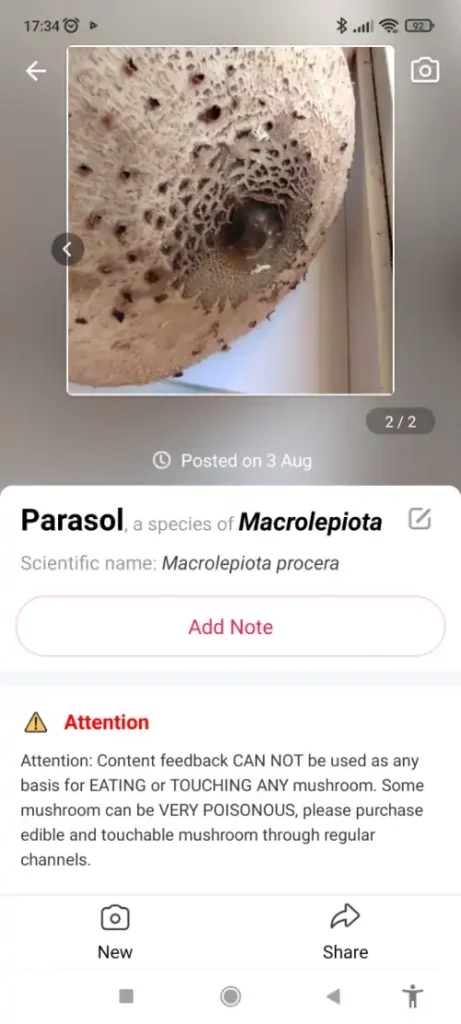
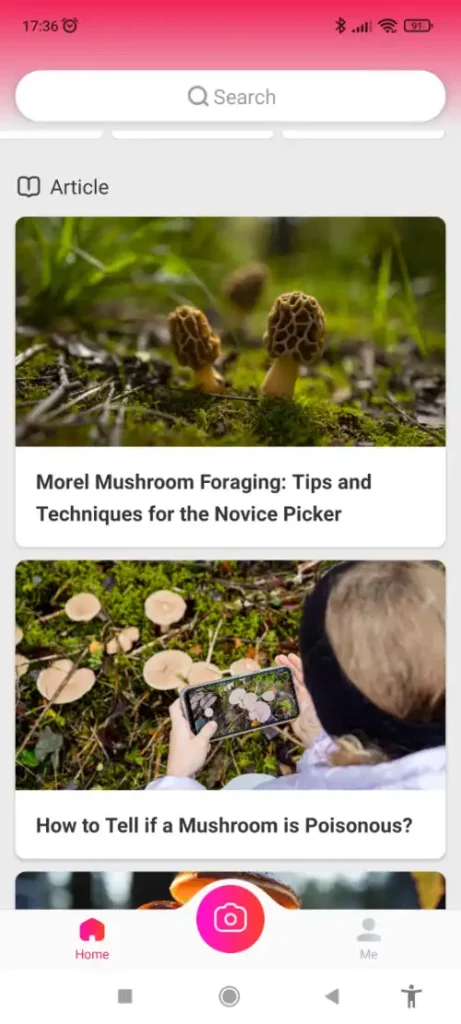
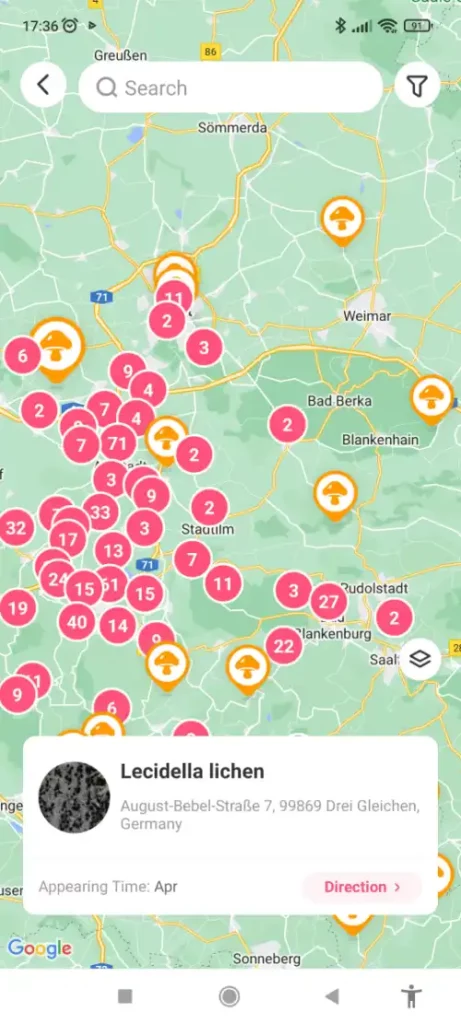
Pros of Picture Mushroom:
- Noted for higher accuracy in identifying mushrooms (49% in tests)
- Easy to use with a user-friendly interface
- Provides quick results from photo uploads
- Offers identification suggestions for similar species
Cons of Picture Mushroom
- Not perfect; still has a significant rate of incorrect identifications.
iNaturalist (Free)
iNaturalist is an amazing app that lets you upload photos of mushrooms, plants, and animals, which are then identified with help from the community. This crowdsourced data is incredibly valuable for scientific research and conservation efforts around the world. I especially love its interactive observations map, which shows where different types of mushrooms have been found.
It’s a fantastic tool for discovering new foraging spots and offers a wealth of learning information on mushrooms.
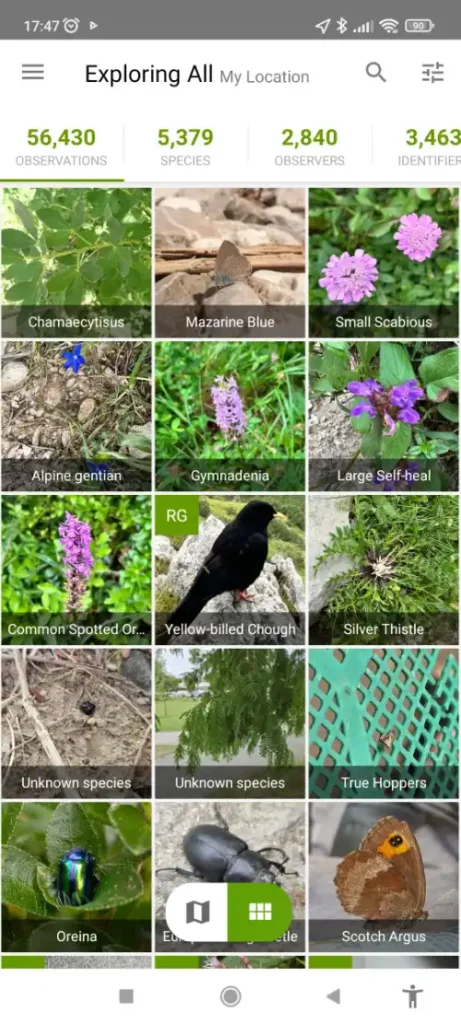
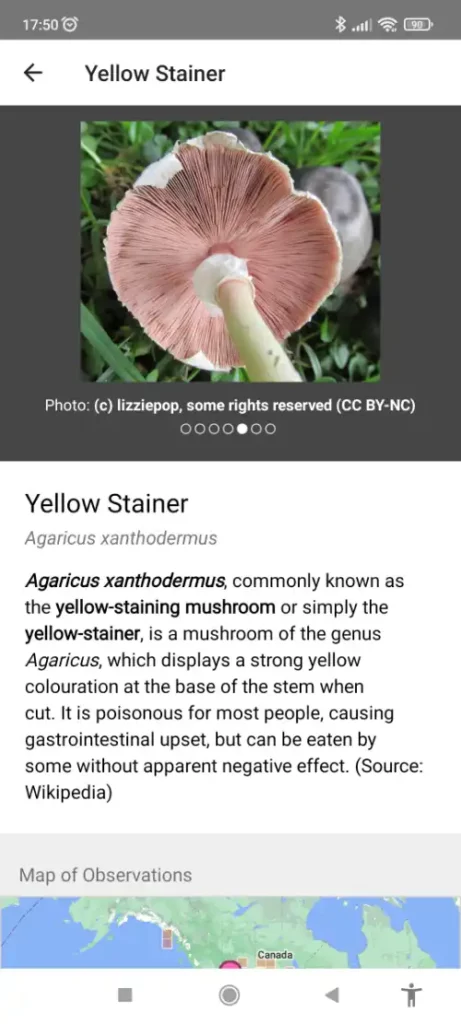
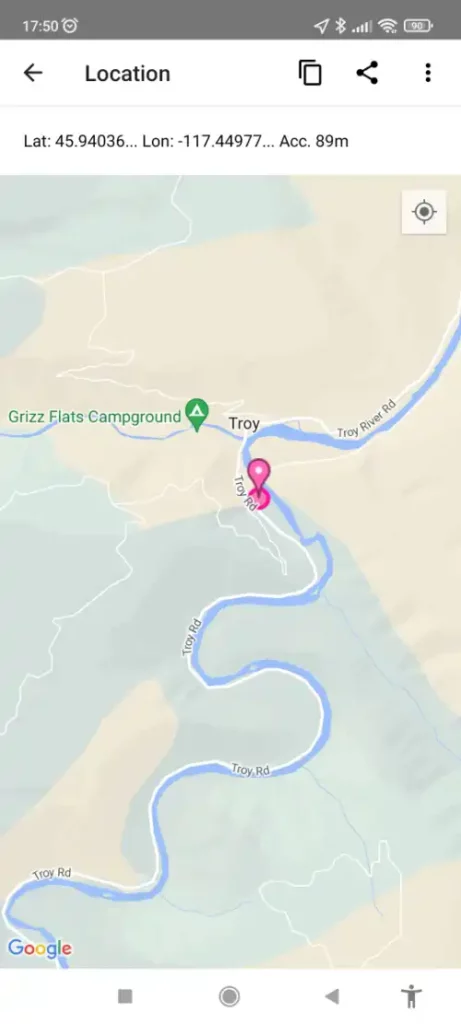
Pros of iNaturalist
- Combines geolocation and image data for identification
- Utilizes a well-trained model that improves with quality input
- Includes a peer review system, adding an extra layer of verification
- Valuable tool for verifying potential identifications
- It’s great for educational purposes, helping students and beginners learn about biodiversity through data collection and exploration.
Cons of iNaturalist
- Significant rate of incorrect mushroom identifications.
According to Pub Med comparison of the accuracy of mushroom identification apps Picture Mushroom correctly identified 44% of poisonous mushrooms, whereas iNaturalist identified 40%. However, when it came to correctly identifying Amanita phalloides specimens, Picture Mushroom had a success rate of 60%, outperforming iNaturalist, which correctly identified 27%.
Shroomify (Free limited – Premium full)
Shroomify feels similar to using a field guide. You observe the mushrooms you find and then select their features in the app. It then provides a list of possible matches based on your selections.
I believe this app is excellent for beginners. It helps you learn how to distinguish between different mushroom characteristics and develop better observation skills, which are crucial for safe foraging.
While the free version only allows you to see one photo, I still recommend this app for its educational value. It’s particularly useful for learning how to observe mushrooms effectively. Plus, the feature that lists seasonal mushrooms for the current month is a nice bonus.
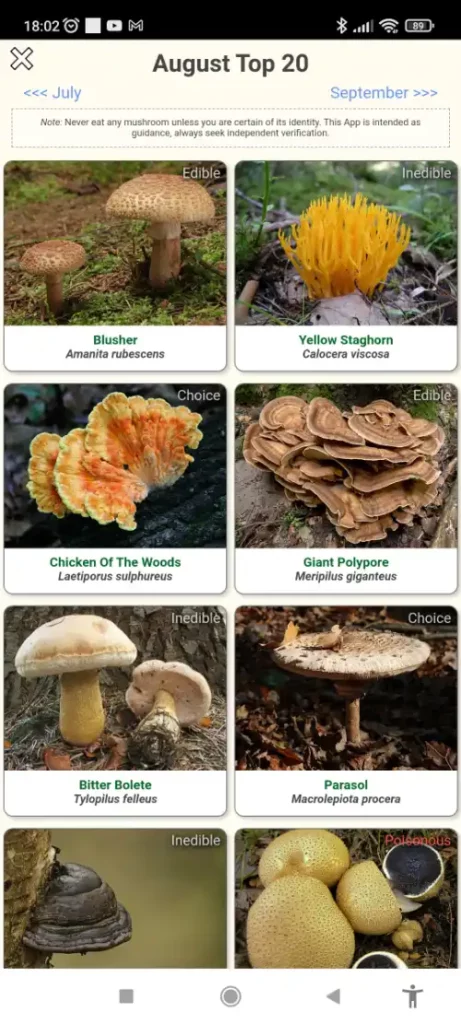
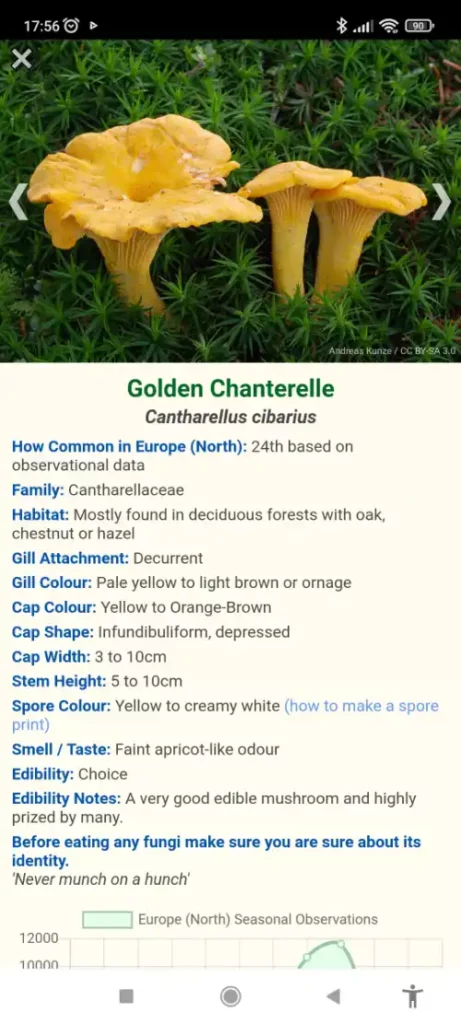
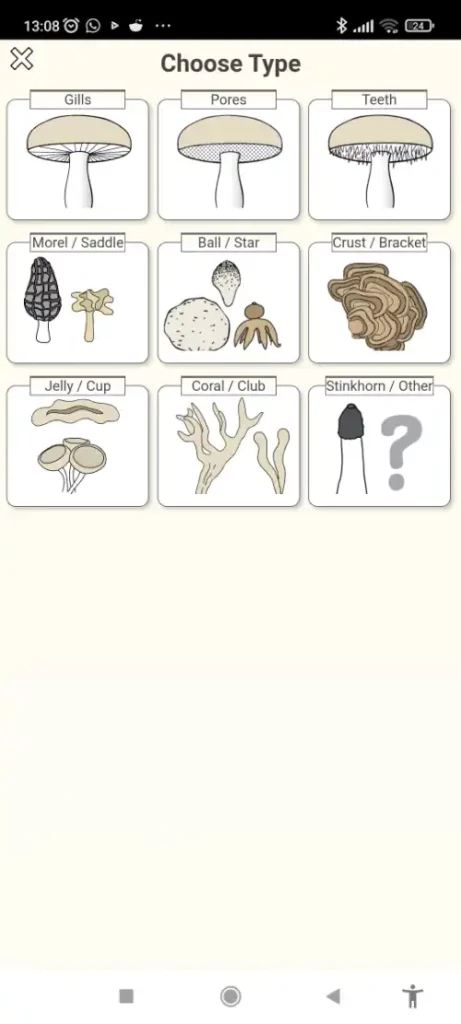
Pros of Shroomify
- Allows input of specific identification features
- Helps generate a list of similar mushrooms
- Useful for narrowing down identification possibilities
- Provides a starting point for mushroom identification
Cons of Shroomify
- Free version is very limited, but the cost of premium version is very low
Google Lens
One more app that might surprise you on my list is Google Lens. This free app is incredibly versatile and uses Google’s advanced image recognition technology. While it doesn’t have specific mushroom identification features, it can be a handy tool for narrowing down the mushrooms you’ve found. It’s worth mentioning because of its general usefulness and the powerful image recognition capabilities it offers.


Pros of Google Lens
- Utilizes advanced image recognition technology
- Useful for generating initial ideas about a mushroom’s identity
- Quick and easy to use
- Broad Google search database that in most cases links directly to the correct similar sources
Cons of Google Lens
- Not specialized for mushroom identification, may miss critical details
To sum up, while mushroom foraging apps can be a handy way to get an initial ID, they shouldn’t be the only thing you use to figure out whether a mushroom is safe to eat. There are some pretty big risks of getting things wrong, and that can have some serious consequences for your health. It’s really important to check any identifications you get from apps against expert advice, reliable field guides and other reputable resources.
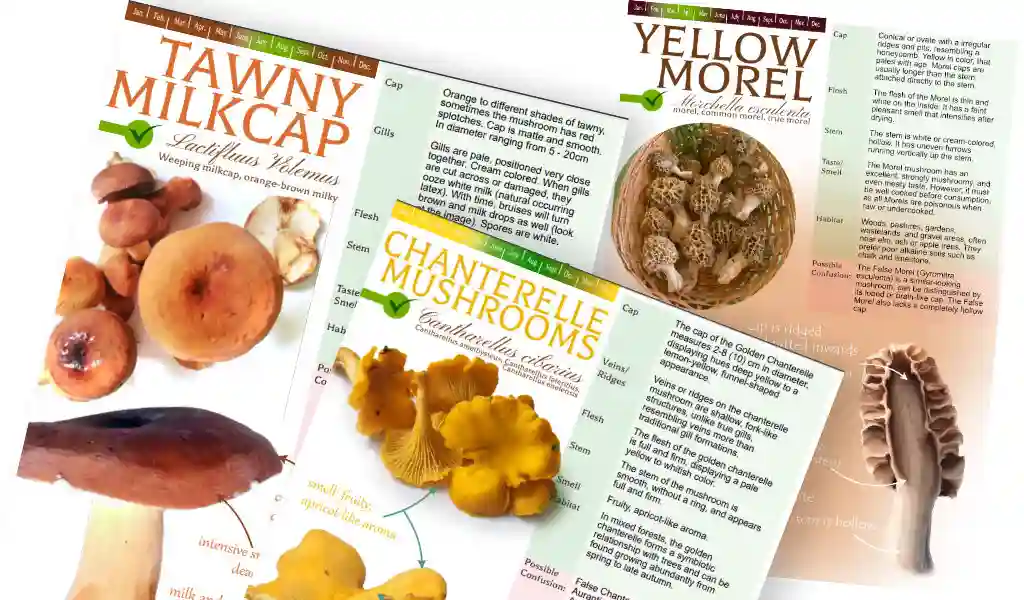
On my page, you can find identification guides that can help you get started.
Always make sure you’re safe by thoroughly inspecting mushrooms and seeking professional opinions when in doubt.
Happy and safe foraging!
Turbo Tasty’s Collection of Wild Mushroom Recipes


